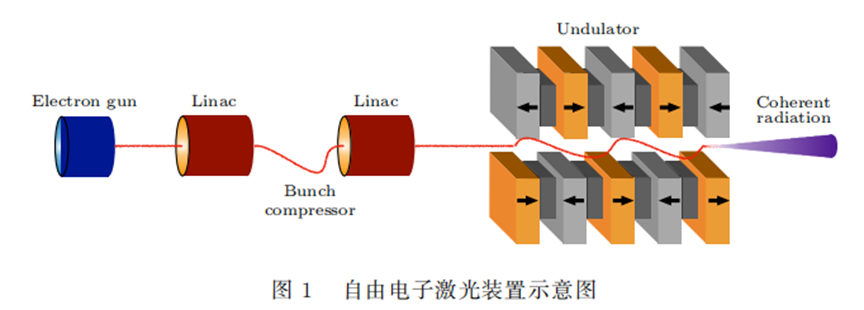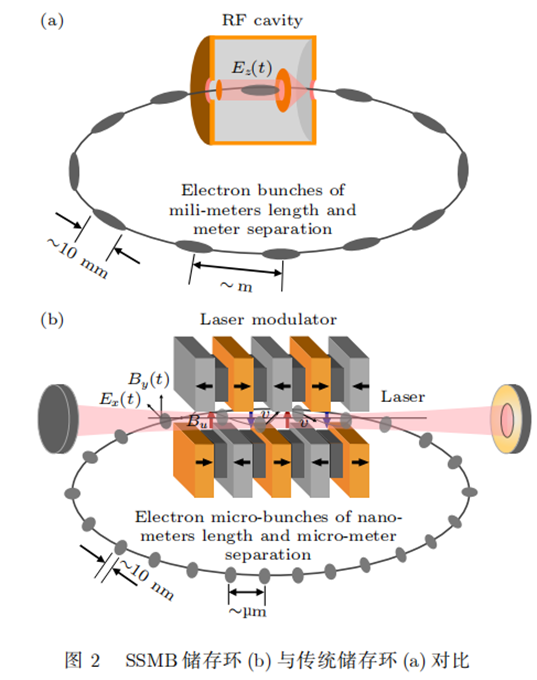Service hotline
+86 0755-83044319
release time:2023-10-13Author source:SlkorBrowse:15501
III. SSMB-EUV Synchronous Radiation Light Source
From the official news of Tsinghua University in early 2023, it can be seen that the starting point of the Xiong'an SSMB project is to solve the problem of "neck bottlenecks" in chip production with the support of a ministry. It can be seen that the location and building model of the project have been determined, but it is unclear when it will be completed.
Therefore, from a scientific perspective, the SSMB-EUV light source is recognized by the international top journal Nature. In terms of practical engineering, it has also been launched and is being implemented in Xiong'an. Therefore, this is definitely not a hoax, and the research team really wants to develop the SSMB-EUV light source, with billions of investments expected to be approved.
It should be noted that the SSMB is currently still in the research stage. The new type of accelerator being built in Xiong'an is intended to establish a research platform to enhance the performance of the SSMB-EUV light source. It is still far from actually producing an EUV lithography machine, so optimism should be tempered. The development of the LPP-EUV light source from conception to successful development and industrial application took more than 20 years. ASML took 13 years to develop the EUV prototype and nearly 10 years for actual mass production and application.
Under pressure to solve the "neck bottleneck" problem, Chinese progress will be much faster if the scientific principles and engineering are feasible, but it is still unlikely to solve the problem immediately. This article cannot estimate the time frame, mainly introducing relevant technical background. The most important thing is whether the SSMB-EUV light source is feasible for industrial lithography applications. As long as it is feasible, China can certainly accomplish it.
To help readers interested in science understand, the scientific principles of SSMB synchrotron radiation sources are explained below.
SSMB stands for Steady-State Micro-Bunching, which refers to the clustering of electrons. The SSMB light source refers to the electrons in it being deflected in a magnetic field when approaching the speed of light, emitting electromagnetic radiation in the tangent direction, namely light. This is the principle for the emission of synchrotron radiation (SR) from an accelerator. Electrons in the accelerator circle due to magnetic field constraints and can make millions of circles per second, like being stored in a ring and emitting electromagnetic waves while constantly rotating. Due to the high speed and large quantity of electrons, the emitted electromagnetic waves are numerous.
The reason why it is called synchrotron radiation is actually a historical misunderstanding. The discovery that electrons emit light in the tangent direction was initially made in a synchrotron accelerator at General Electric, hence the name. The characteristic of a synchrotron radiation source itself is full spectrum, high brightness, narrow pulse width, and high collimation.

"Full spectrum" means that the light source covers all wavelengths from infrared to deep ultraviolet (EUV) and even X-rays. With high brightness, it can be used to explore the interior of materials just like an X-ray machine, and has even higher power and stronger exploration capabilities than an X-ray machine. Some of the EUV light can be used for photolithography research, but as mentioned earlier, mass production is not possible due to low efficiency.
"The lower power" is the weakness of traditional synchrotron radiation sources. Although synchrotron radiation is brighter than X-ray machines, people always want higher power, especially for industrial applications such as EUV lithography. The reason why synchrotron radiation sources have low power is that the electron beam length is too large and lacks coherence. The electromagnetic radiation emitted by electrons is "incoherent superposition", which results in low power.

The improvement proposed in 1971 was the "free-electron laser" (FEL), which is based on a "undulator". After being produced, electrons are linearly accelerated to near the speed of light and emit SR through deviation in the undulator. Unlike the magnetic field of an accelerator that makes electrons circle, the magnetic field of this undulator oscillates. Through clever arrangement, the electron beam becomes a "micro-bunch" with shortened length, stronger aggregation and coherence, resulting in "coherent radiation" with exponentially increased power up to the limit. Its brightness can be billions of times higher than that of traditional synchrotron radiation, but it is pulsed.
SRF-FEL (SRF is superconducting radio frequency) has also become one of the choices for the next generation of EUV light sources. Although its power is stronger, its cost is higher. It should be noted that this FEL device is arranged linearly.

To be continued...









Site Map | 萨科微 | 金航标 | Slkor | Kinghelm
RU | FR | DE | IT | ES | PT | JA | KO | AR | TR | TH | MS | VI | MG | FA | ZH-TW | HR | BG | SD| GD | SN | SM | PS | LB | KY | KU | HAW | CO | AM | UZ | TG | SU | ST | ML | KK | NY | ZU | YO | TE | TA | SO| PA| NE | MN | MI | LA | LO | KM | KN
| JW | IG | HMN | HA | EO | CEB | BS | BN | UR | HT | KA | EU | AZ | HY | YI |MK | IS | BE | CY | GA | SW | SV | AF | FA | TR | TH | MT | HU | GL | ET | NL | DA | CS | FI | EL | HI | NO | PL | RO | CA | TL | IW | LV | ID | LT | SR | SQ | SL | UK
Copyright ©2015-2025 Shenzhen Slkor Micro Semicon Co., Ltd